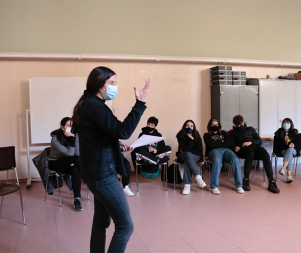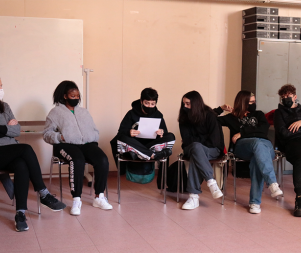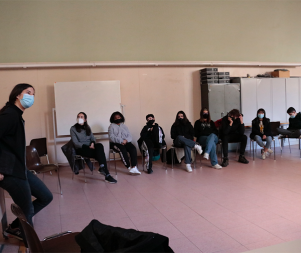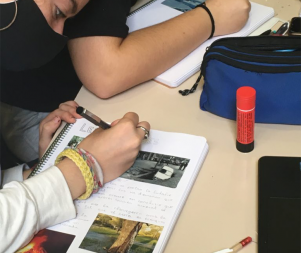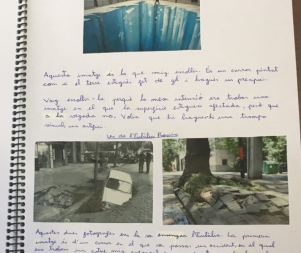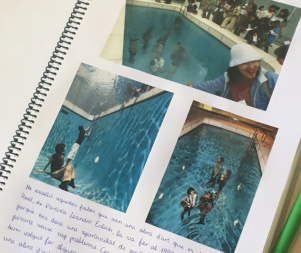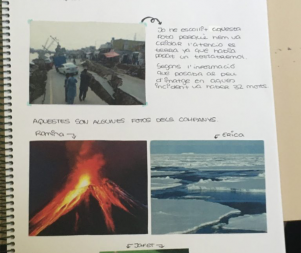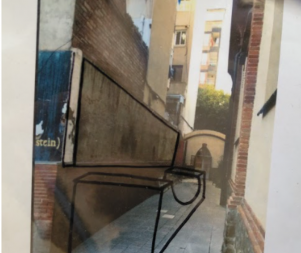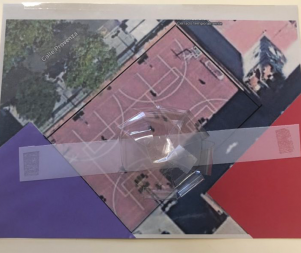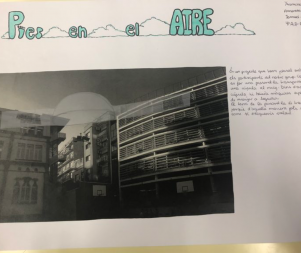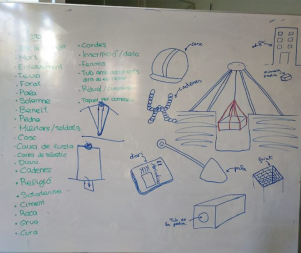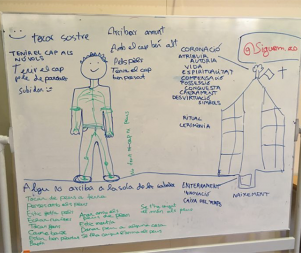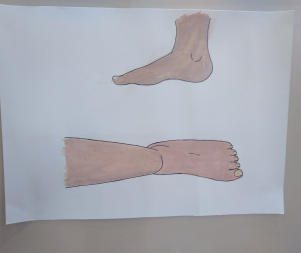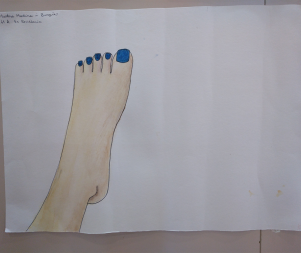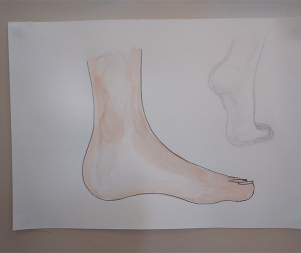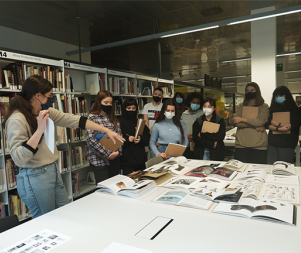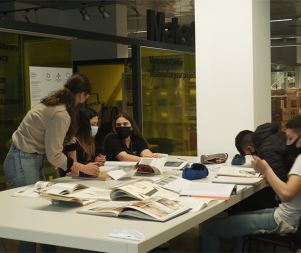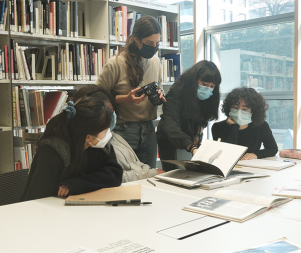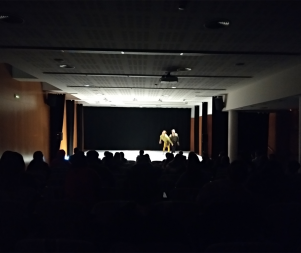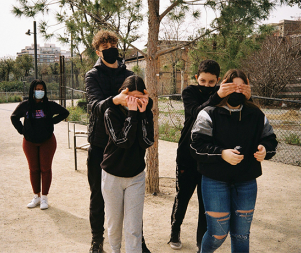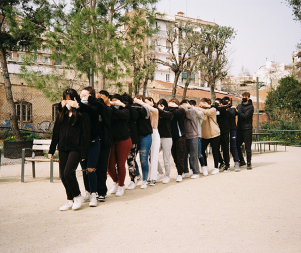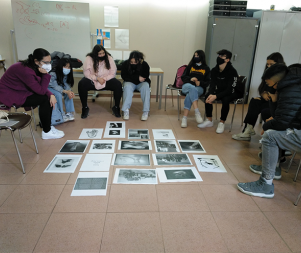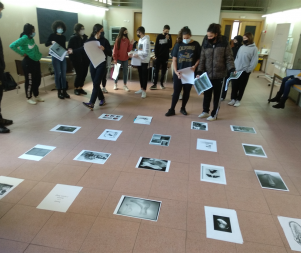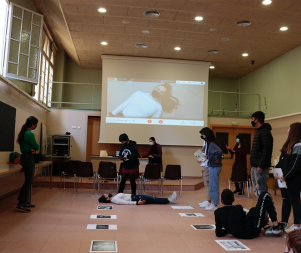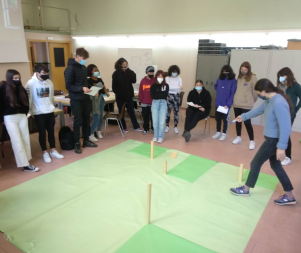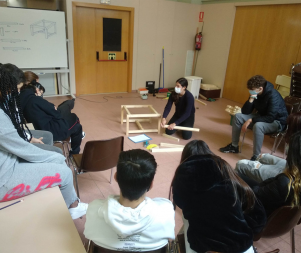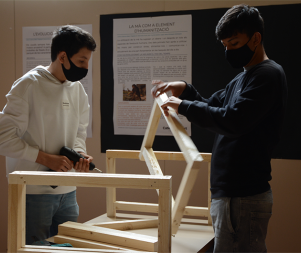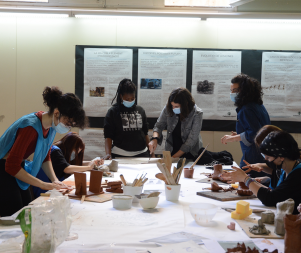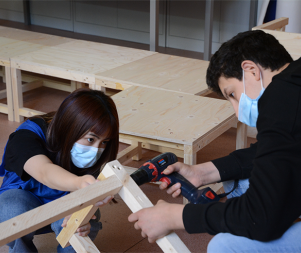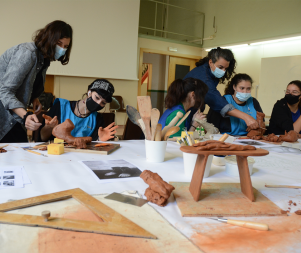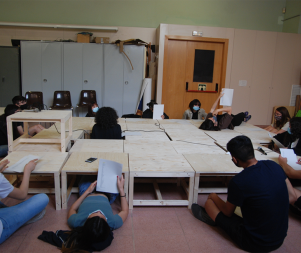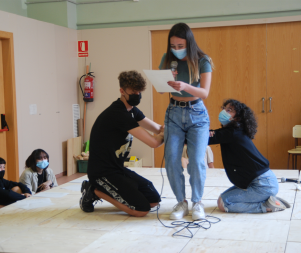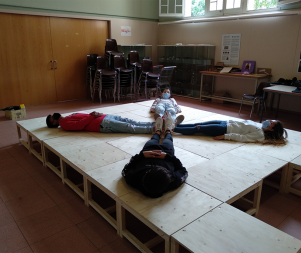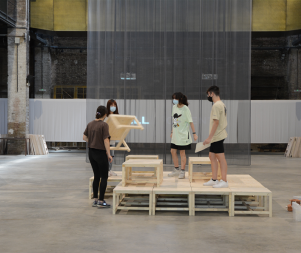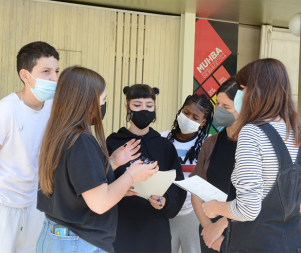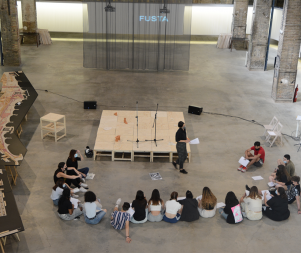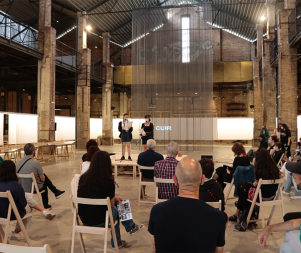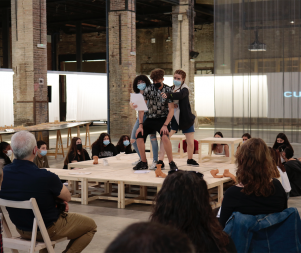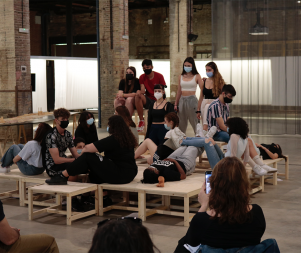- 14th EDITION 2022 / 2023
- 13th EDITION 2021 / 2022
- 12th EDITION 2020 / 2021
- 11th EDITION 2019 / 2020
- 10th EDITION 2018 / 2019
- 9th EDITION 2017 / 2018
- 8th EDITION 2016 / 2017
- 7th EDITION 2015 / 2016
- 6th EDITION 2014 / 2015
- 5th EDITION 2013 / 2014
- 4th EDITION 2012 / 2013
- 3rd EDITION 2011 / 2012
- 2nd EDITION 2010 / 2011
- 1st EDITION 2009 / 2010
Eulàlia Rovira IN RESiDENCE at the School Caterina Albert
Presentation and formulation of the starting point
During the first sessions while getting acquainted, Eulàlia Rovira proposes to the group of students that they start off by carrying out some research, reflecting on the space and the relationship between feet and the ground, from now but also throughout history. It is a multidisciplinary proposal, which involves working on the issue from very different angles, from a more historical perspective using images from historical archives and documents such as Chronicles of newspapers and satirical cartoons, to looking for images of contemporary creations, the writing of their own texts, a performance or even a sculpture.
References and notebooks
Throughout the entire process, images play an important role in the creation. So too the contemporary artistic references that have dealt with this issue in one way or another. After viewing, the images are included in the notebook to form an ongoing record for reflection throughout the entire process.
Small projects on the surfaces of the school
Proposal for small interventions around the school that put into play some of the questions that came up during the first few months: intervention and alteration of services, raised passages, etc. Projects are created by doing small photo-montages or collages.
Keywords, writing and reading aloud
The text is an important element in the working process and it is for this reason that whiteboards are filled with keywords associated with the focus points of the work, which are the starting points for the creation of the texts. These texts are read with a microphone, playing with different elements such as the position of the body, the location in the space, the tone of voice, in order to work on the performance aspect of the readings.
The construction of the building; laying the first stone and the crown
Photographic research on the construction of the building, foundations, the first stone, the crown. Research on photographs from the archives of the laying of the first stone of the school building. Photographic explorations and short exercises around the school, speculating on how we can cross the surfaces and the limits of the buildings. Think about the layers upon which the city is built.
Draw feet, think about shoes as a collage
Our feet support us: they are the base of our body. Have we ever thought about that? Natural drawing of feet and the beginning of the research into shoes and how these have separated us from the ground through different periods. Collages and written texts.
Research about shoes (history of footwear) and pavements (materials and decorative arts).
Session at the Documentation Centre at the Museum of Design in order to carry out research in the library’s collection of books with images on the history of footwear and also pavements. During these research sessions, the selection and reprography of the materials that we consider most interesting in order to increase the bank of images. The impressions of the images are placed on a mural in the classroom, in which new relationships and links are forged.
A dance show and an action
A show which is part of Quinzena de Dansa Metropolitana at the Fort Pienc: ‘Before everyone knows’, by Paula Serrano, an open rehearsal followed by a discussion. The session, shared with other groups of IN RESIDENCE students, opens up a reflection: What happens when we lose our sight? How would this change us? When leaving the rehearsal, a series of exercises in the street are performed to put this question into affect.
Sequence of images to prepare the teachers’ session: and if we put on a performance?
Gather together all the images accumulated throughout the process, also excerpts of texts and other new texts that we have generated. Select and order them. Can we make a sequence with the images to explain our reflections, to generate questions? This is the starting point for the teachers’ session, which becomes an online performance.
Create a structure that separates us from the ground
The final project began with the concept of the modular, wooden platform that would be the scene and setting, which would allow us to separate ourselves from the ground and elevate our bodies upwards. It is decided to measure the modules and the construction system and the work begins with wood, cutting it, assembling the pieces and setting up all the modules.
The other elements: sculpture and text
The other elements are laid out around the platform, the bodies, the text and also some sculptures that will make the research and reflections about footwear, about feet, evident. Several working groups are generated in order to make progress in parallel. The potter Julieta Dentone helps with the sculpture aspect, which begins with the reference images.
First rehearsals: voice and body
Once the wooden structure is finished, the work on the upper body begins, investigating and working the possibilities of movement etc. Then the work on the text and the voice with microphone begins, in order to modulate the voice and the diction, and then to begin organising the textual material into a script, in different acts.
Final script and rehearsals at MUHBA Oliva Artés
Two consecutive rehearsals at the MUHBA Oliva Artés space to finish giving shape to the performance, the text, the movements on stage and presentation. Work is carried out in small groups in order to set up the stage, place the sculptures and prepare the space. Small variations in the text are also included originating from the rehearsals.
Presentation
The performance takes place on 3 June at MUHBA Oliva Artés. The performance takes place and then there is a discussion with the audience. There is a large audience, with classmates, family members and teachers, as well as people associated with the world of culture, recreation and education.

